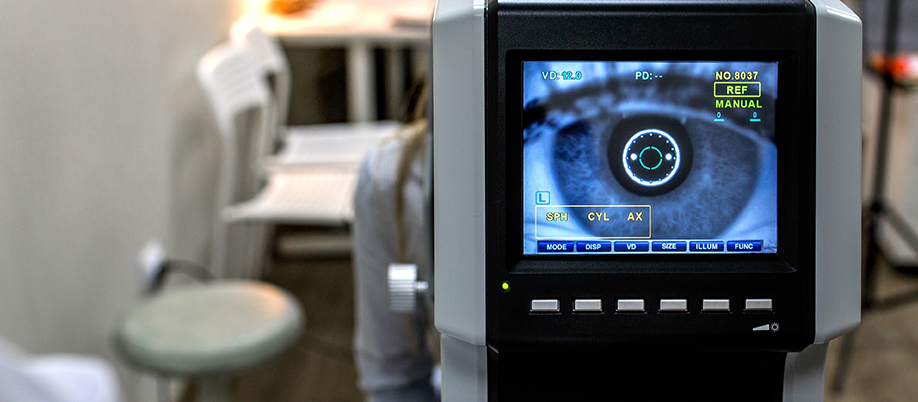Understanding Keratoconus
Conical cornea, also known as keratoconus, is a vision and eye health condition that may impact your ability to get LASIK surgery. We can help you learn more about this eye condition and see whether it’s right for your unique eyes.

An Introduction to Conical Cornea (Keratoconus)
The transparent, dome-shaped structure at the very front of the eye is known as the cornea. This directs beams of light into your eyes onto the macula, a structure on the inside back wall of the eye. When light is focused directly on the center of the macula, you are able to see clearly. Keratoconus is a medical condition in which the cornea becomes thinner and begins to bulge out in the shape of a cone. This causes rays of light to get out of focus, since the cornea is not a perfect sphere.
How a Conical Cornea Develops
It's unclear how or why keratoconus begins to develop. It may be genetic in some cases, while in others it may be related to the excessive rubbing of your eyes, eye itching and allergies, and certain connective tissue disorders like Ehlers-Danlos syndrome.
Symptoms of Keratoconus
Most people don't have any symptoms of keratoconus other than blurred vision. Many don't know they have keratoconus until they have specific testing done, which is most often performed during a LASIK surgery consultation but may be performed in an optometrist's or ophthalmologist's office.
The majority of patients with a conical cornea begin to notice the onset of worsening symptoms around age 20, or as a young adult. Blurred vision is the main symptom of this condition and can range from mild to severe. Straight lines may begin to appear wavy or bent, and patients may become photophobic, or sensitive to bright lights or night glare. In some cases, patients may experience redness, tearing, sensitivity, and rarely, pain.
Are you experiencing any symptoms related to keratoconus?
Make an appointment for an eye health review
How Keratoconus Is Diagnosed
A conical cornea can be diagnosed in a number of different ways. When keratoconus is severe, an eye doctor will usually pick up on this during a regular vision or eye health exam. A better way to test for this condition is through the use of corneal topography, which is a painless test that creates a topographical "heat map" of your cornea and allows a surgeon to see areas of thinness or bulge.
Keratoconus Treatment
Keratoconus treatment usually includes the use of gas permeable (hard) contact lenses, which can help push the cornea back into its proper shape.
Contact I Love LASIK Today for Your Surgical Consultation
Keratoconus may interfere with your ability to have LASIK surgery, particularly if you are over the age of 40. If you are young and have a mild case of conical cornea, it may be better for you to consider LASIK now, before the condition worsens. Contact I Love LASIK today to book your surgical consultation to learn more about LASIK eye surgery and to determine your eligibility based on your eye health and prescription.
